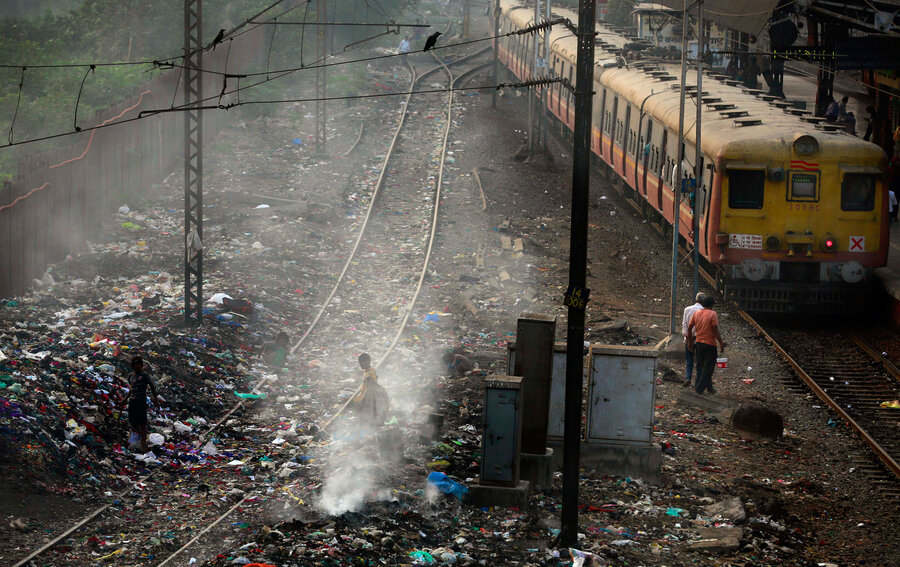The haves and have nots of clean air: Air pollution worst in developing world
Loading...
Four out of every five people living in a city are exposed to poor air quality, according to the World Health Organization.
Zabol, Iran, came in first for the world’s worst air quality, with concentrations of fine particulate matter known as PM 2.5 (particles smaller than 2.5 micrometers in diameter) reaching 217 particles per cubic meter. The next four cities rounding out the top five were all in India: Gwalior, Allahabad, Patna, and Raipur.
As the top five cities suggest, WHO found more discouraging results for low-income countries. Helping those nations to improve air quality not only holds significant potential to improve public health in some of the poorest regions of the world, but also to combat the accumulation of greenhouse gasses triggering global climate change.
Of the 3,000 cities analyzed, only 2 percent of low-income countries meet WHO standards of air quality, compared with 44 percent of high-income countries. And while global urban air pollution levels increased by eight percent between 2008 and 2013, the majority of cities in high-income countries actually improved their air quality over the same time period. And overall, 30 percent of cities actually lowered their levels of pollution, according to CNN.
But WHO also sees relative success in countries with poor air quality. Although India faces a “huge challenge” in improving its air quality, the fact that the country has reputable methods for recording air quality is an achievement in itself, say researchers.
“Probably some of the worst cities that are the most polluted ones in the world are not included in our list, just because they are so bad that they do not even have a good system of monitoring of air quality, so it’s unfair to compare or give a rank,” Dr. Maria Neira, head of public health, environmental and social determinants of health at WHO, told Reuters.
For example, many African cities would likely have made the list of worst quality, but they have unreliable measurement systems. The little air pollution data that is available for Africa, says WHO, suggests that PM levels are above the median.
In China, a country that also boasts some of the worst air quality, “They have increased massively their amount of monitoring,” Carlos Dora told The New York Times.
Urban air pollution may be rising at “an alarming rate,” says Dr. Neira, but “at the same time, awareness is rising and more cities are monitoring their air quality.” According to the report, 3,000 cities in 103 countries are now tracking their air pollution: nearly double the number of cities from 2014. And a “trend towards more transparency” translates into a trend towards “more action to deal with the problem,” Niera told Reuters.
“It is crucial for city and national governments to make urban air quality a health and development priority,” Dr. Dora said in a WHO press release. “When air quality improves, health costs from air pollution-related diseases shrink, worker productivity expands and life expectancy grows. Reducing air pollution also brings an added climate bonus, which can become a part of countries’ commitments to the climate treaty.”
And despite the discouraging findings for India, the country’s recent efforts to improve air quality have not been in vain. New Delhi, the country’s capital, was ranked the worst city in 2014 with a PM 2.5 reading of 153.
But this year, after New Delhi has tried to tackle the city’s pollution by limiting the number of private cars allowed on public roads, the city fell to ninth place with a PM 2.5 measurement of 122. Mexico City has recently taken on a similar initiative called “Hoy No Circula,” which requires all privately owned cars to stay off of the streets at least one day per week.
This report includes material from Reuters.








